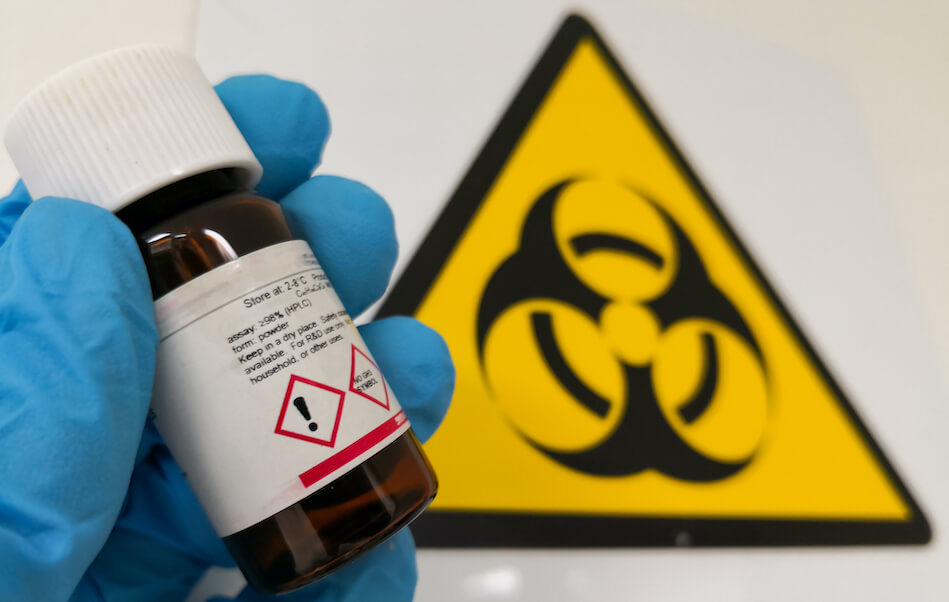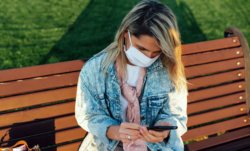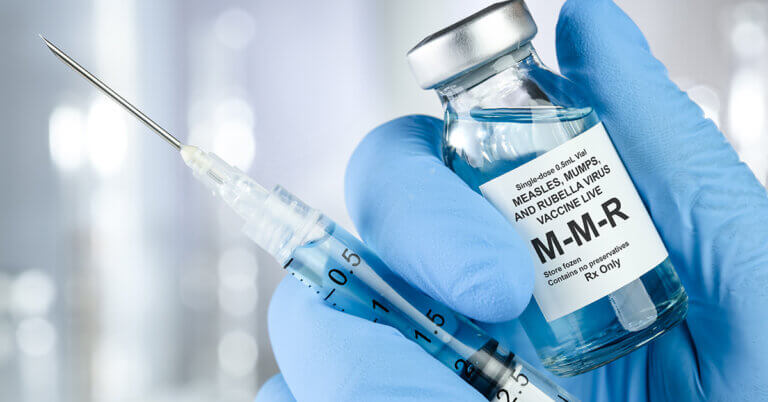July 21, 2020

Pandemic Preparedness: Beyond Bioterrorism & Federalism
One week to the day following the 911 attacks, five letters containing anthrax spores were sent the offices of major media outlets, including the National Inquirer. Just over two weeks later, Robert Stevens from the National Inquirer’s sister publication The Sun died from anthrax poisoning. Ultimately, these anthrax attacks afflicted twenty-two people and killed five of them, and caused public confusion, concern and fear.
The FBI led the federal response to the attacks and treated them as a law enforcement event. At the US Department of Health and Human Services (HHS) where I worked at the time, the attacks laid bare a glaring lack of preparedness for bioterrorism attacks.
Mr. Stevens’ death triggered a series of events within HHS that compromised the agency’s short-term effectiveness to combat the anthrax emergency. These included muddled communications, rampant rumor spread, and bureaucratic paralysis. We had been unprepared for the anthrax attacks and knew it.
Subsequent to the anthrax attacks, HHS developed policies and capabilities to address bioterrorism more systematically and effectively. Understanding this history is essential to explaining how HHS responded to the current coronavirus pandemic (spring 2020) and why the initial HHS efforts to slow the disease spread failed.
While bioterrorism attacks and pandemics share many characteristics, they are fundamentally different types of emergencies to manage. As we have experienced with the coronavirus, pandemics carry greater societal risk. Our nation’s flawed preparations for pandemics and its uneven response continues to devast the population and economy. The United States of America cannot afford to react to the next pandemic in the same way. Knowledge is power.
2001: An HHS Odyssey
HHS is broadly responsible for managing the nation’s health and healthcare. This is a vast mandate. The agency has an absolute treasure trove of scientific, organizational, and public health talent. The challenge is focusing this pool of human genius on the right problems in the right way at the right time.

In the last years of the Clinton Administration, Dr. Margret Hamburg, the HHS Assistant Secretary for Planning and Evaluation, began an initiative to prepare for biological attacks. As the George W. Bush Administration took office in early 2001, the total combined budget for combatting bioterrorism was sizeable, roughly a quarter of a billion dollars [1], and a testament to Dr. Hamburg’s persistence.
This new funding funneled through the Food and Drug Administration (FDA), the Centers for Disease Control (CDC), the National Institutes of Health (NIH), and a newly created Office of Emergency Preparedness. It was on this early but solid beginning that the federal government built the nation’s planned responses to bioterrorism and pandemic influenza threats.
In the first few years following the anthrax attacks, both the Administration and the Congress exhibited a robust commitment to bioterror funding. Important initiatives focused appropriately on: creating and stocking a national stockpile of vital equipment; reinforcing the States’ abilities to surveil, detect, and respond to a bioterror events; building a Federal coordinating body within
HHS; and conducting research through the NIH.
The Stockpile procured countermeasures for anthrax, plague, botulism, nerve gas poisoning radiation poisoning, and a host of other nasties. Good scientific advice drove most procurement, although faulty intelligence arising from the Iraq conflict caused some mis-investment.
Worth noting, government activity focused more on bioterrorism than pandemic disease. For example, the stockpile undertook a large-scale acquisition of a smallpox vaccine to counter a potential a smallpox bioterror attack.
Doctrine of Emergencies
Almost all emergencies are local. Floods, earthquakes, hurricanes happen in geographically specific areas. Consequently, the federal government directs its emergency responses to affected areas, not across the entire country. This is also true for dirty bombs, nerve gas poisoning and bioterrorism.
While widespread attacks are conceivable (e.g. undetected anthrax delivered to multiple locations, mustard gas sprayed over multiple cities), they are exceedingly difficult to execute and unlikely to occur. With the exception of smallpox, HHS assumes bioterrorism attacks will be local and quickly contained.
Smallpox is a special case since it is highly contagious and especially lethal to populations naïve to the virus. The most common smallpox strain, variola major, is about 30 percent lethal [2]. By comparison, the coronavirus has a comparable transmission rate, but a lethality rate of 6.4% in the U.S., for the week ending July 11, 2020.[3]
Letting a smallpox epidemic rage unchecked is unthinkable. After eradicating the disease and ending vaccination for it, a substantial portion of the population is vulnerable. The Federal response doctrine for smallpox is to maintain sufficient vaccine to inoculate the entire US population rapidly. It would be checked, but not without costs.
The vaccination is fairly easy and does not require a medical professional. As one of the HHS scientists, Dr. Bill Raub, said to me, “See one, do one, teach one.” The question remains; however, how should HHS respond to a pandemic when no vaccine exists?
Pandemic Preparedness
In 2004 John M. Barry published The Great Influenza: The Epic Story of the Greatest Plague in History, a remarkable book that documents the influenza pandemic of 1918 that killed 675,000 Americans and over 50 million people worldwide. President George W. Bush and HHS Secretary Mike Leavitt read Barry’s book in 2005 as an avian influenza was emerging in Asia. They added pandemic preparedness to HHS’s bioterrorism mandate.

Pandemics differ from typical emergencies. An uncontained pandemic is not local. It is everywhere at the same time. Absent a vaccine, the first line of defense is to contain infections as they emerge. Once viruses spread beyond containment, the only real options are protecting the most vulnerable, insuring an adequate supply of personal protective equipment (PPE), and keeping hospitals from being overwhelmed.
To limit disease spread and death, it’s essential to know how each virus spreads, which people are most vulnerable [4] and the illness’ severity. And it’s essential to apply effective therapeutics. Considering the natural history of other diseases, it can be prudent to close schools [5], gyms and restaurants, impose social distancing and recommend extreme personal hygiene—the measures we have seen in the response to COVID-19. All these measures (and more) are in the pandemic plan assembled in 2005.
That 2005-2006 pandemic plan focuses primarily on the federal government’s responsibilities in responding to pandemic threats. For instance, it is HHS’s responsibility to produce and distribute vaccines. And the plan assigns the responsibility for tracing and containing disease spread to the CDC working with state public health departments.
CDC is the global think tank for “disease detectives.” Countries around the world rely on the CDC for advice and guidance. They benchmark their pandemic plans and performance against CDC standards.
For outbreaks, CDC relies on testing and quarantining infected persons to stop or slow the spread into larger populations. And the CDC’s testing mechanics rely heavily on State public health labs.
The 2001 anthrax attacks exposed the degraded condition of the nation’s public health infrastructure, specifically States’ abilities to test, surveil and track disease outbreaks. As Medicaid budgets
consumed greater shares of state health budgets over time, states had slashed public health spending and found they were unprepared for the testing, communication and coordination required by a bioterrorism response.
Building from the November 1, 2005 pandemic plan, the Bush administration and Congress embarked on a multiyear, multibillion-dollar rebuilding effort for the US public health infrastructure. The plan included grants, aid-in-kind, and cooperative agreements. In 2020, annual funding for CDC’s Public Health Preparedness program is roughly $800 million, on a budget line that didn’t exist until the anthrax attacks.
Despite spending billions to fund public health infrastructure since 2001, in 2020 CDC’s testing plan systematically failed to respond adequately to the COVID-19 pandemic. The CDC’s official virus test failed, and contamination compromised CDC labs. But the agency persisted in sticking with its plan despite the availability of other proven tests and a vast network of private labs to process tests.
Even if CDC’s COVID-19 test had worked, the massive testing need would have overwhelmed the network of state public health labs. The CDC’s doctrine of reliance on “the public health infrastructure” was fatally flawed. The price the nation has paid in lives, dollars and disruption is astronomical.
From 1998 to 2018, the Federal government’s pandemic flu preparedness has assigned management of the Strategic National Stockpile (SNS) to the CDC. The stockpile began as a small cache of pharmaceuticals authorized after President Clinton read Richard Preston’s The Cobra Event, the story of a fictional act of bioterrorism. Following the anthrax attacks and Hurricane Katrina, the stockpile was expanded and renamed the Strategic National Stockpile.
The Stockpile now includes a substantial reserve of medical therapeutics and supplies. With the looming possibility of an Avian Influenza outbreak during 2006, the SNS made a significant investment in oseltamivir, N95 masks, and respirators, and other supplies necessary to treat a highly infectious upper-respiratory disease.
In 2005 and 2006 through a series of “summits,” HHS also urged states to create their own pandemic stockpiles, especially of oseltamivir. Unfortunately, state budgets do not quickly accommodate sudden, unplanned expenditures. Obvious questions surfaced: “How much do we need? Is the Federal government going to finance the States’ expenditures? Does this mean we cannot rely on the SNS?” While there were attempts to offer guidance, HHS largely left these questions unanswered.
In 2009 the SNS faced its first large-scale test with the outbreak of H1N1 [6]. The Stockpile was able to deploy large quantities of countermeasures, including about a quarter of its supply of antiviral drugs to afflicted regions within just five days. It also distributed other vital supplies, including respirators. The H1N1 influenza pandemic stressed but didn’t break the SNS. Complacency followed.
A New Federalist Doctrine for Pandemics
No recent event has more clearly showcased how federalism governs national affairs in 2020 than the coronavirus pandemic. State officials, especially governors, hold substantial authority in times of a health crisis. Their powers include quarantining and halting commerce. By contrast, Federal governmental powers stop at the national borders and usually do not extend into the states.

States’ uneven fulfillment of their undefined Stockpile responsibilities was on full display as they scrambled for PPE and ventilators in spring 2020. Most states turned to the national Stockpile to supplement their stocks. It quickly became obvious that the Stockpile wasn’t sufficient for all their needs. Communications between the states and the Federal government became hostile and filled with mutual charges of unpreparedness.
An opaque methodology for Stockpile acquisitions and distributions contributed to mistrust. States eventually formed geographic consortia to avoid “Lord of the Flies” bidding wars for vital supplies. At times distribution of critical material bought by states was hijacked by the Federal government for its own purposes. Probably the best example of the complete breakdown of supply distribution was in Maryland. Governor Hogan was able to secure 500,000 coronavirus tests from South Korea. The tests were placed under guard by the Maryland National Guard to prevent expropriation by the Federal government. Nothing like this should ever happen in the US.
Federalism is a durable governing doctrine that failed to adequately respond to the coronavirus pandemic. There is a clear need for the federal government and states to improve their preparation, coordination and communication.
A Doctrine for Pandemics
The first predicate for creating a doctrine for pandemics is that pandemics differ from other emergencies by type not just by degree. Effective response to both bioterrorism events and pandemics requires good testing and good epidemiology. For bioterrorism and pandemics, the federal government must fulfill its responsibility to coordinate testing and communicate results.
To slow disease spread in a pandemic, the country must have the ability to conduct immediate and widespread testing. During pandemics, the federal government must expand beyond traditional public health resources and incorporate private sector testing and processing capabilities or it will lose the opportunity to contain the disease.
To respond effectively, the States and the Federal government need a compact on what constitutes “pandemic preparedness.” That includes clear definition of the roles the States and Federal government play in managing strategic stockpiles of vital medical equipment and supplies. They must agree on a material, actionable definition of preparation and work to meet it. Confronting unknown transmission rates, lethality and population vulnerabilities requires exquisite federal-state coordination, cooperation and communication. No more excuses.
A firm federal/State compact on pandemic preparedness will, no doubt, stress State budgets. State leaders will need to manage the tradeoffs between investing in preparedness and other essential services for which States are responsible. There will be constant pressure to do less, to wait to next year, to address other priorities. That’s a valuable political discussion. We hire our political leaders to make those decisions, and priorities should compete for budget dollars every year. As citizens, we should impose consequences at the voting booth when our political leaders get the balance wrong.
These debates miss an essential truth. The human and economic costs of not containing pandemics are catastrophic. Therefore, the return for containing a pandemic (and not shutting down society) is infinite.
In 1957 Dwight Eisenhower said, “Plans are worthless; planning is everything.” The Pandemic plan was built on bioterrorism and emergency preparedness. We’ve had two pandemics since planning began. We’ve learned some of what works, and we need to accept what hasn’t worked, and act.
In the same way that wars are too important to be left to the generals, national pandemic response is too important to be left to Public Health and emergency responders. For the next plan, we’ll need to include governors, food, drug and medical supply chains, telecommunication, and technology, and others, working with Public Health and healthcare providers.
We know there will be more pandemics. Scientists identified 335 new human infectious diseases between 1940 and 2004 [7]. Moreover, globalization increases disease transmission. Our pandemic future will be more volatile and dangerous. Contagion and economic activity are inextricably linked. Forewarned is forearmed.
In 2005 I was part of a delegation to southeast Asia as part of HHS, State Department and USIAD efforts to learn about avian flu. Dr. Anthony Fauci was also on the delegation. He and I had a conversation regarding the nature of human disease. I don’t recall the question I asked, but I remember his answer. In the avuncular fashion we’ve all come to know, Dr. Fauci said,
“Kerry, people die of things all the time that we don’t understand. We just hope it’s not highly contagious.”
Sources
- See the HHS 2001 HHS Budget in Brief
- World Health Organization, see https://www.who.int/biologicals/vaccines/smallpox/en/
- CDC. (2020, July 17). COVIDView: A Weekly Surveillance Summary of U.S. COVID-19 Activity. Retrieved July 21, 2020, from
https://www.cdc.gov/coronavirus/2019-ncov/covid-data/covidview/index.html - Normally the vulnerable are thought to be the very old and the very young. However in the 1918 pandemic, middle-aged adults were disproportionately affected, leaving orphaned young children with surviving grandparents.
- I will never forget the look on the HHS Secretary’s face when an NIH scientist described young children as “promiscuous excreters.”
- See Medical Countermeasures Dispensing: Emergency Use Authorization and the Postal Model, Workshop Summary at https://www.ncbi.nlm.nih.gov/books/NBK53127/
- Jones, Karen E., Nikkita G. Patel, Marc A. Levy, Adam Storeygard, Deborah Balk, John L. Gittelman and Peter Daszak, 2008.
“Global Trends in Emerging Infectious Diseases,” Nature, 451, 990-993.





